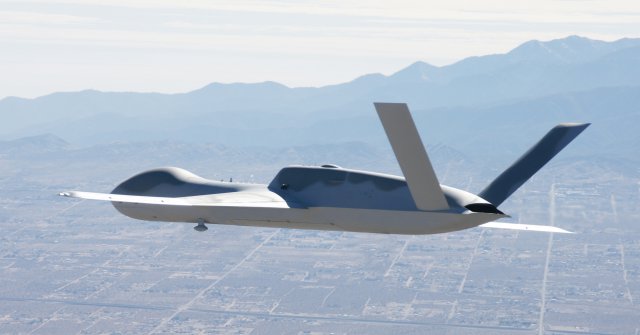As General Atomics Aeronautical Systems Inc (GA-ASI) discloses the pursuit of a potential sale of 90 jet-powered Predator C Avengers to an undisclosed international customer, company executives are pushing the US government to clarify and relax export controls on unmanned air vehicles to non-NATO allies.
The potential deal could be a breakthrough for the slow-burning Avenger programme, which until now, only acknowledged the US Air Force operated a technology demonstrator since a public unveiling in 2009. This week, GA-ASI officials disclosed up to seven aircraft deliveries to an unnamed US government agency.
But GA-ASI now faces potential barriers imposed by the international missile technology control regime (MTCR) agreement.
UAVs such as Avenger fall under MTCR’s Category I regulations, which are rarely licensed for export. In 2015, the Obama Administration adopted a policy that tightened export policy on UAVs to most non-NATO allies. The policy also required importers of American-built UAVs to comply with end-use monitoring by the US government as a condition of any sale.
As the Trump administration considers setting new MTCR export policies, GA-ASI chief executive Linden Blue urges the White House to make short-term changes, such as relaxing State Department-imposed policies on UAV exports.
“That allows the executive branch to use judgment on MTCR-related decisions,” he says. “Changing the MTCR, which is not a formal treaty, that will take longer and involve many countries.”
GA-ASI’s two main competitors in the global market for large UAVs — Israel and China — are not signatories to the MTCR, but have in the past pledged to voluntarily comply with the export restrictions.
Blue criticised MTCR’s strict rules as not only a stumbling block for the potential international sale of 90 Avengers, but a regulation that could cripple American power in the UAV market.
In a potential sign that export policies are softening, the US State Department in June approved the sale of 22 turboprop-powered Predator B Guardian maritime patrol UAVs to the Indian Navy. The Avenger can fly higher and faster than other Predator models, which raises the bar for obtaining the relief from US government and MTCR controls on UAV exports. Except for the provision of a recovery system, such as a landing gear, large jet-powered UAVs are almost indistinguishable from the cruise missiles the MTCR is designed to obstruct.
Speaking on the possible international sale, GA-ASI president David Alexander touted the Avenger’s large sensor bay, which could carry a system equal in size to the United Technologies Aerospace Systems MS-177 multi-spectral sensor. GA-ASI’s main rival in the high performance UAV arena, Northrop Grumman, is testing the MS-177 on the RQ-4 to help bring the Global Hawk to parity with the USAF’s legacy U-2S Dragon Lady high-altitude manned reconnaissance aircraft.
“If you wanted to fly this airplane along the border and look into somebody else’s country deep in, that would be a sensor so big you can’t really put it on an MQ-9, that aircraft has an advantage,” Alexander says “That aircraft is fairly unique in that it has such a large weapons sensor bay in the middle of it. Structurally that’s a nightmare to build like that because it’s just a big cavity right where you want your wing box to go through so there’s a lot of penalties we did with a single bay that’s that large. Now that you have that it’s like a pickup truck, it can carry a laser in that bay or an optical payload.”
Source: FlightGlobal

